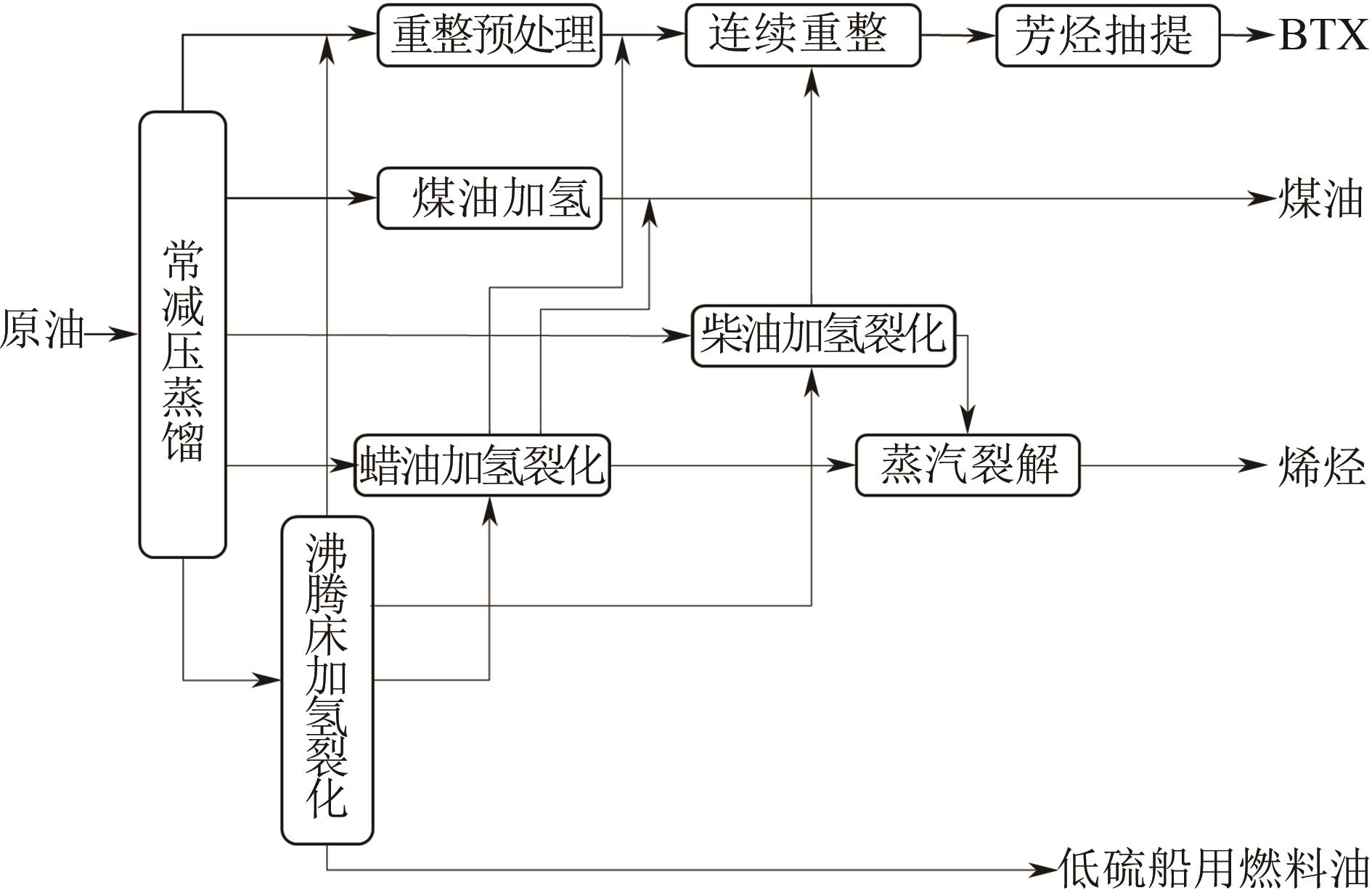| 1 |
孔劲媛,丁少恒. 国内外船燃标准提高的市场机遇及相关建议[J]. 石油商技, 2019, 37(5): 64-67.
|
|
KONG Jinyuan, DING Shaoheng. Market opportunities and related suggestions for the improvement of ship combustion standards at home and abroad[J]. Petroleum Products Application Research, 2019, 37(5):64-67.
|
| 2 |
王天潇. 典型炼油企业低硫重质船用燃料油生产方案研究[J]. 当代石油石化,2019,27(12): 27-34.
|
|
WANG Tianxiao. Study on production of low sulfur heavy fuel oil in typical refineries[J]. Petroleum & Petrochemical Today, 2019,27(12): 27-34.
|
| 3 |
孙丽丽. 新型炼油厂的技术集成与构建[J]. 石油学报(石油加工),2020,36(1): 1-10.
|
|
SUN Lili. Technology integration and construction of new refineries[J]. Acta Petrolei Sinca (Petroleum Process Section), 2020, 36(1): 1-10.
|
| 4 |
王敏,徐奇轩. 炼化一体化转型升级项目渣油加氢工艺路线比选[J]. 齐鲁石油化工,2020, 48 (2): 169-175.
|
|
WANG Min, XU Qixuan. Comparison and selection on residual oil hydrogenation process routes using in the refining and chemical integrated transformation & upgrading project[J]. Qilu Petrochemical Technology, 2020, 48 (2): 169-175.
|
| 5 |
李雪静,乔明,魏寿祥,等. 劣质重油加工技术进展与发展趋势[J]. 石化技术与应用,2019, 37 (1): 1-8.
|
|
LI Xuejing, QIAO Ming, WEI Shouxiang, et al. Technical progress and development trend of inferior heavy oil processing[J]. Petrochemical Technology & Application,2019, 37(1): 1-8.
|
| 6 |
方向晨. 国内外渣油加氢处理技术发展现状及分析[J]. 化工进展,2011, 30 (1): 95-104.
|
|
FANG Xiangchen. Development of residuum hydroprocessing technologies[J]. Chemical Industry and Engineering Progress, 2011, 30 (1): 95-104.
|
| 7 |
PANARITI N, BAZZANO F, DELBIANCO A, et al. Optimization of process conditions in slurry-phase upgrading of resides[J]. American Chemical Society Division of Petroleum Chemistry Preprints, 2001, 46(1): 78-81.
|
| 8 |
SAHU R, SONG B J, IM J S, et al. A review of recent advances in catalytic hydrocracking of heavy residues[J]. Journal of Industrial & Engineering Chemistry, 2015, 27: 12-24.
|
| 9 |
MARQUES J, MAGET S, VERSTRAETE J J. Improvement of ebullated-bed effluent stability at high conversion operation[J]. Energy & Fuels, 2011, 25: 3867-3874.
|
| 10 |
STRATIEV D S, SHISHKOVA I K, NIKOLAYCHUK E, et al. Effect of catalyst condition on sedimentation and conversion in the ebullated bed vacuum residue H-oil hydrocracking[J]. Liquid Fuels Technology, 2019, 37(12):1463-1470.
|
| 11 |
CALDERON C J, ANCHEYTA J. Modeling of slurry-phase reactors for hydrocracking of heavy oils[J]. Energy & Fuels, 2016, 30(4): 2525-2543.
|
| 12 |
刘建锟,杨涛,郭蓉,等. 解决高硫石油焦出路的措施分析[J]. 化工进展, 2017, 36(7): 2417-2427.
|
|
LIU Jiankun, YANG Tao, GUO Rong, et al. Analysis of measures to solve high sulfur petroleum coke[J]. Chemical Industry and Engineering Progress, 2017, 36(7): 2417-2427.
|
| 13 |
吴青,吴晶晶. 沸腾床加氢及其未转化油改质中试研究与技术经济分析[J]. 炼油技术与工程, 2016, 46(11): 1-5.
|
|
WU Qing, WU Jingjing. Pilot plant research and technical economic analysis for ebullated-bed hydrocracking and upgrading of its unconverted oil[J]. Petroleum Refinery Engineering, 2016, 46(11): 1-5.
|
| 14 |
杨涛,方向晨,蒋立敬,等. STRONG沸腾床渣油加氢工艺研究[J]. 石油学报(石油加工),2010(S1): 33-36.
|
|
YANG Tao, FANG Xiangchen, JIANG Lijing, et al. Research on STRONG ebullated bed residue hydrotreating process[J]. Acta Petrolei Sinica (Petroleum Processing Section), 2010(S1): 33-36.
|
| 15 |
CASTANEDA L C, MUNOZ J A D, ANCHEYTA J. Combined process schemes for upgrading of heavy petroleum[J]. Fuel, 2012, 100:110-127.
|
| 16 |
沈本贤. 石油炼制工艺学[M]. 2版. 北京:中国石化出版社, 2017: 389-406.
|
|
SHEN Benxian. Petroleum refining technology[M]. 2nd ed. Beijing: SINOPEC Press, 2017: 389-406.
|
 ), GUO Rong, TONG Yujun, WU Ziming, YANG Tao
), GUO Rong, TONG Yujun, WU Ziming, YANG Tao

